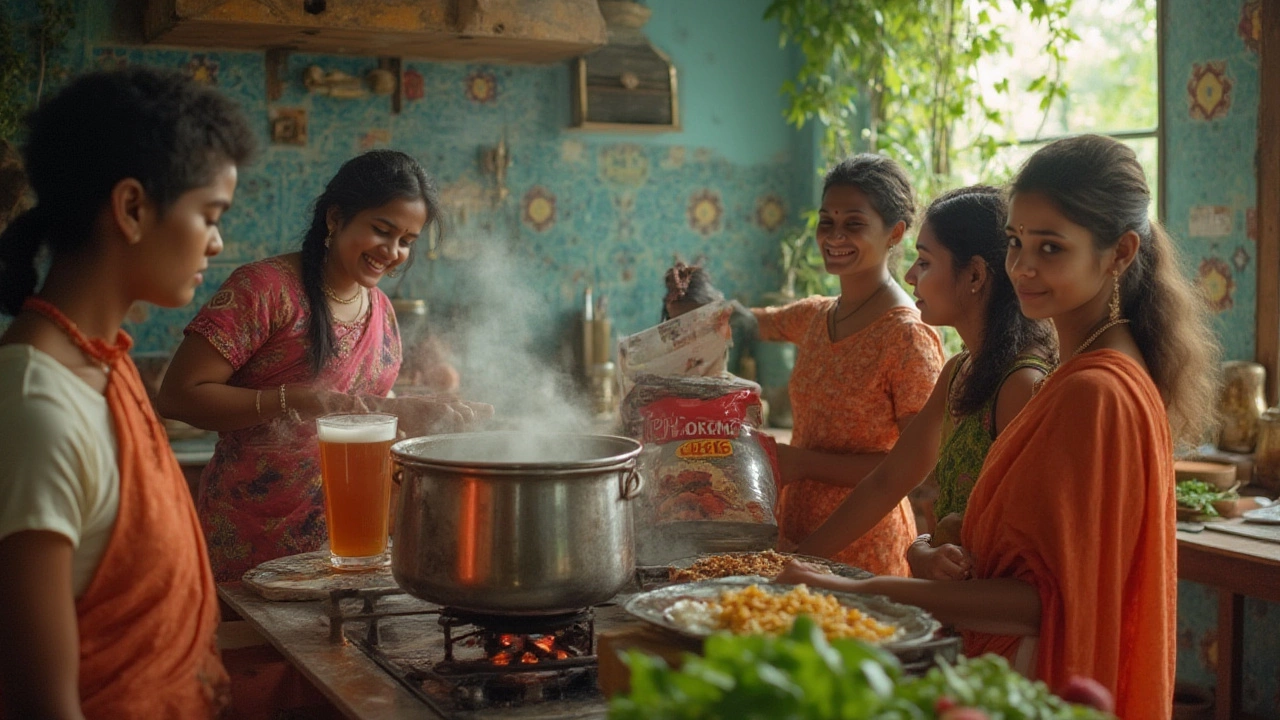
Picture this: It’s a blazing summer afternoon, and someone slides you a frosty, golden glass of beer. Maybe it’s a favorite craft lager or the reliable classic your dad used to enjoy after mowing the lawn. But you’ve decided you want to skip the buzz—perhaps you’re the designated driver, expecting a baby, or just trying to keep a clear head. Suddenly comes the million-dollar question: Can you simply boil beer to turn it into a non-alcoholic version of itself? Or does that idea belong next to the myth about microwaving wine to "sober it up"? This is way more complicated (and interesting) than just boiling water. There’s history, science, kitchen hacks, and even a handful of wild taste experiments involved. The truth may surprise you.
How Alcohol Really Works in Beer
Beer is so much more than just a fun fizzy drink; it’s a science project in a glass. When you crack a bottle or pour a pint, you’re sipping on water, barley, hops, yeast, and—of course—alcohol. The alcohol, or ethanol, is produced when yeast gobbles up sugar during fermentation. In your typical lager or ale, you’re looking at somewhere between 4% and 7% alcohol by volume (ABV), though plenty of beers clock in higher or lower.
Here’s the thing: Alcohol boils at 78.37°C (173.1°F). Water, as most people remember from science class, doesn’t get steamy until 100°C (212°F). This matters a lot. When you apply heat to beer, the alcohol does evaporate first—at least in theory. But real life does not play out like a middle-school chemistry demo. Beer isn’t pure alcohol and water, it’s a crowded mix of sugars, proteins, flavor compounds, CO2, and those famous aromas. As a result, alcohol evaporation is slowed down by the whole gang of molecules in the pot. Just getting beer to "non-alcoholic" levels (which by global legal standards is typically under 0.5% ABV) isn’t as straightforward as one might hope.
Now, some important numbers: If you simmer beer for 30 minutes, expect to remove 35-40% of the alcohol, according to a frequently cited USDA chart. Want to hit non-alcoholic status? That’d mean hours of careful simmering or even some special lab equipment.
There’s one catch: heat also messes with everything else in beer. Your favorite crisp pilsner might come out of this experiment tasting like liquid bread, or worse, a bitter, burnt mess. You won’t just lose alcohol, you’ll lose most fresh flavors, carbonation, and color.
What Actually Happens When You Boil Beer?
You could grab a pot, pour in your favorite brew, and stick it on the stove—so what unfolds from there? Bring that beer up to a simmer, bubbles start to rise, and you’re forcing volatile compounds, including alcohol, out into the air. Scientists call this distillation, only it’s happening in a crude, home-kitchen way.
Alcohol does leave first, and if you let the boiling go on long enough, much of it will be gone. Some homebrewers have actually measured this—after boiling beer for one hour, most find the ABV drops to around 1%–2%. Not exactly "non-alcoholic," but lighter than before. The only way to approach 0.5% or less (what commercial laws allow for the real deal) is to keep boiling for another hour or two, stirring and possibly adding fresh water as the beer evaporates and thickens. If you stop too soon, you’re left with something more like a weak Shandy than a bottle of alcohol-free Heineken.
But the trade-offs add up quickly. The heat will strip carbonation, so your now-flat liquid barely resembles beer in the glass. Hops oils break down and re-form into harsh-tasting compounds. Protein clumps form and cloud the beer. Any subtle malt notes begin to taste caramelized, or in some cases, scorched. The aroma—so much of what makes beer delightful—drifts up with the steam.
Curious about what’s lost? Here’s a look at typical changes:
| Property | Before Boiling | After 2 Hours Boiling |
|---|---|---|
| Alcohol by volume | 5.0% | ~0.5% or less |
| Carbonation | Fizzing | Flat |
| Flavor profile | Balanced, crisp, aromatic | Bready, stewed, sometimes bitter |
| Consistency | Clear, light to moderate body | Cloudy, thicker, or syrupy |
So yes, you can boil beer to remove most of the alcohol, but what’s left might be barely recognizable as beer. It’s a trade-off that leaves you with a drastically altered drink.
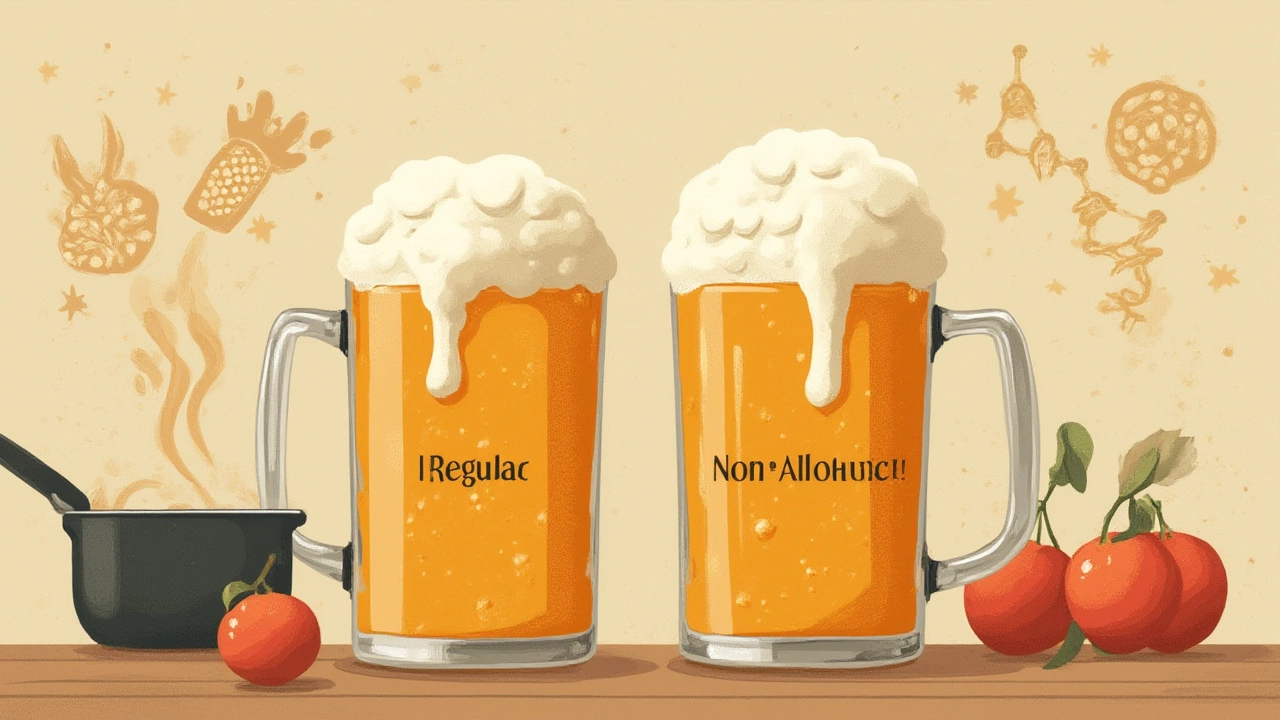
Does Boiled Beer Taste Any Good? Honest Results from the Kitchen
If you’re picturing the crisp, refreshing taste of your favorite IPA or lager, don’t get your hopes sky-high. Boiling beer strips out everything that makes it lively. After two hours on a steady simmer, many people report that the resulting liquid tastes a lot like overcooked bread or burnt malt tea. Hoppy beers suffer even more—alpha acids in hops degrade, turning that snappy bitterness into a heavy, sometimes even medicinal aftertaste.
Anyone who’s tried this in a real kitchen knows: the house smells strong and boozy while the alcohol cooks off, only for the leftover liquid to turn cloudy and flat. Many home cooks admit they’d rather just drink sparkling water than the end result of a beer-boiling experiment. Even nutrition changes—carbohydrates become more concentrated, so the calorie count per ounce goes up. And since all CO2 escapes, there’s no more fizz to tickle your tongue.
But there are a few ways to make the best of a rough outcome, if you’re game for a little culinary experiment:
- Try starting with a malt-forward, low-hop style like a dunkel or wheat beer—the fewer delicate flavors, the less to lose.
- After boiling, chill the beer fast and force-carbonate with a soda siphon (if available) to bring back some fizz.
- Blend your "de-boozed" beer with lemon or ginger syrup for a DIY shandy that masks any odd flavors.
- Reserve it for cooking instead—boiled beer works great in bread, stew, or chili recipes for a malty kick without the alcohol.
No matter how you tweak or twist it, taste is the big sacrifice in this process. Every extra minute over the heat chips away at your hopes for good beer flavor.
How Do Breweries Make Non-Alcoholic Beer?
If boiling beer at home isn’t the tastiest route, how do breweries do it? Here’s where today’s tech gets clever. Big brands invest in purpose-built equipment to keep flavor, aroma, and appearance close to the "real" thing.
There are two main strategies:
- Dealcoholization: Some breweries brew regular beer then send it through vacuum distillation. The vacuum lets alcohol boil off at much lower temperatures, so flavors and aromas don’t get cooked away. There’s also reverse osmosis, which pushes beer through a special membrane—think of it as a high-tech filter that lets alcohol escape but leaves water and flavor molecules behind.
- Arrested Fermentation: Others simply stop fermentation before the yeast makes much alcohol. This means halting the process early, either by chilling or removing yeast, so ABV never climbs above 0.5%.
Brewdog, Heineken, and Athletic Brewing all use these sophisticated tricks to produce near-identical taste and mouthfeel to traditional beers. According to the IWSR in 2024, the global non-alcoholic beer market jumped by more than 9% in just a year—proof these methods are catching on big time.
The best part? No weird, stewed flavors. Many non-alcoholic beers now even win blind taste tests against alcoholic versions of old favorites.
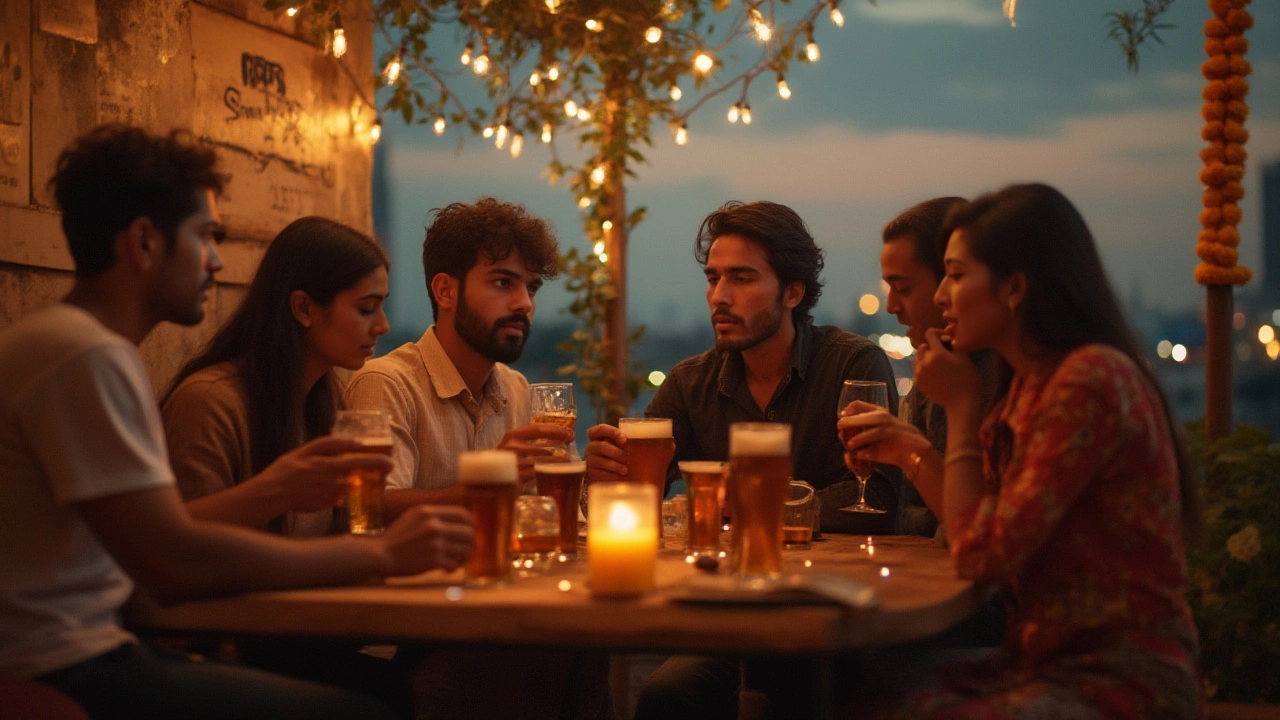
Better Ways to Enjoy Non-Alcoholic Beer—Without Boiling
If you want non-alcoholic beer, it’s easier than ever to get something good—without waiting hours by the stove. Most supermarkets or specialty bottle shops now stock impressive options ranging from hazy IPAs to pitch-black stouts, with ABVs below 0.5%. Try brands like Guinness 0.0, Brooklyn Brewery Special Effects, or Paulaner NA for surprisingly real flavor.
Or, maybe infuse your own flavor twist. Mix non-alcoholic beer with fresh herbs, citrus, or even a splash of fruit juice for a backyard-worthy mocktail. Bartenders have been doing this for years: think radlers (beer plus lemonade) or Micheladas made with NA beer and plenty of lime and hot sauce.
Want a low-tech kitchen experiment instead? Try the "freeze-distillation" trick—pop beer in the freezer, then scrape away the ice, which is mostly water. The leftover liquid is richer and may concentrate flavor, but be careful—the alcohol level will actually increase, not decrease. This method is more of a fun science experiment than a way to lose the booze.
At the end of the day, if you really want a guilt-free pint that tastes legit, stick with commercial non-alcoholic beers or whip up your own fresh mocktails. You’ll skip the burnt flavors and still get all the cheers.
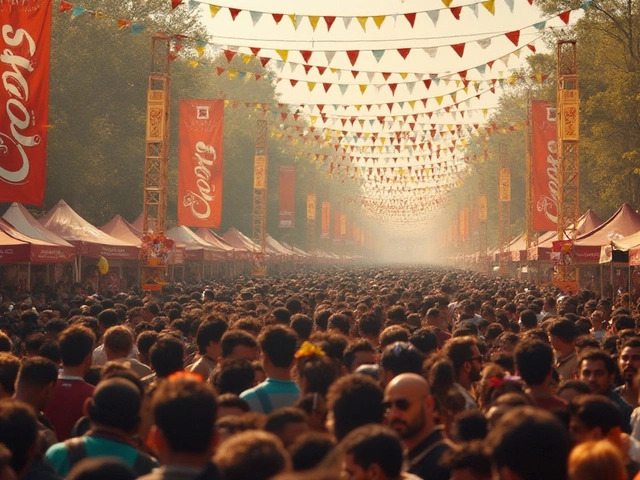
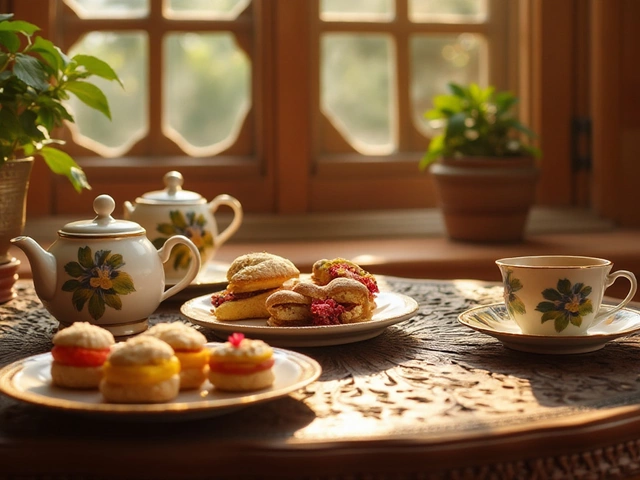
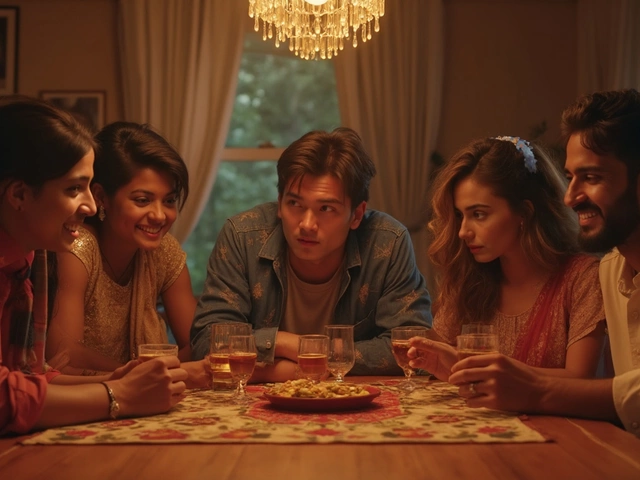
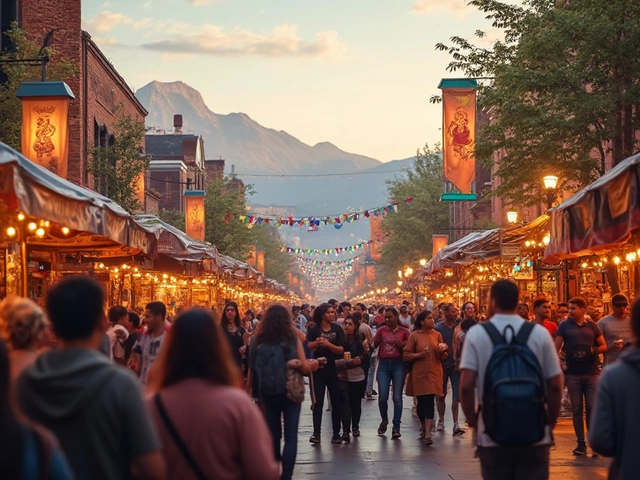
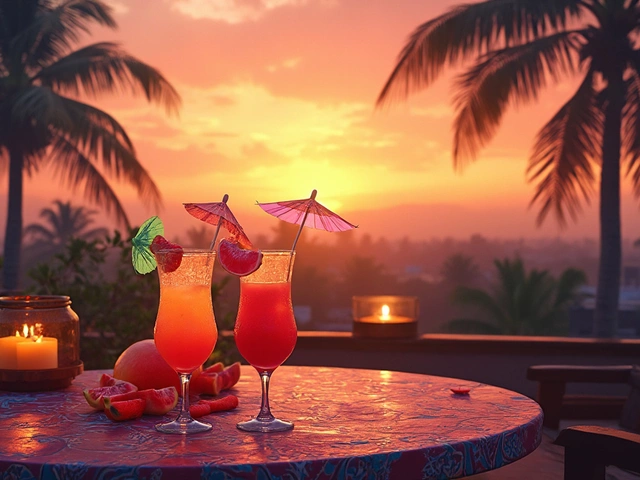
Categories